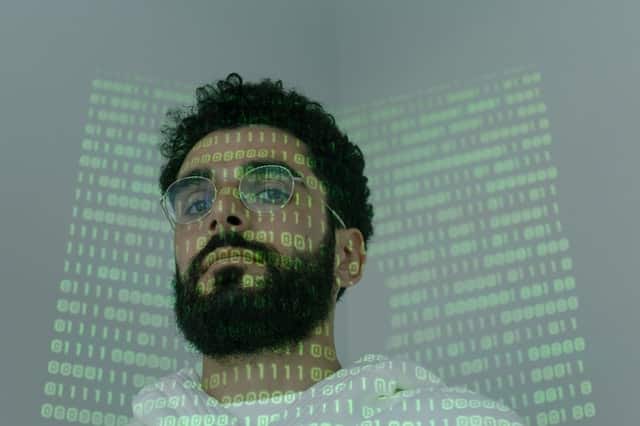It is well-known that the COVID-pandemic has forced change in many industries and driven digitalisation at a pace faster than anyone could have anticipated, but it has happened at the cost of robust security and digital authentication.
The ramifications of this could be felt soon as it becomes increasingly difficult to know whether the person on the other end of a digital transaction is legitimate and authenticated.
Juniper Research in its 2020-2025 Digital Identity Market Summary estimates that digital identity apps will exceed 6,2 billion by 2025 from a 2020 base of 1 billion.
South Africa, together with most other countries, is on an aggressive growth path towards digital authentication and digital recognition maturity.
Entrepreneur and digital, remote biometric authentication specialist, Lance Fanaroff from the award-winning business, iiDENTIFii, says there have been pros and cons as a result of Covid.
“It would appear that 2020 and 2021 rolled into one, resulting in a very hard 24-month year for the majority of businesses. The Covid-19 pandemic has seemingly also been the tipping point for so many technology-driven change cycles, both good and bad, which has left many businesses in a digital dilemma.”


Having recognised the dire need for remote biometric identity authentication locally, iiDENTIFii has successfully developed globally relevant technology that provides proven biometric liveness, facial verification, and validates data through secure triangulated authentication. This unique approach has seen the company win the MTN Business App of the Year Awards 2021 in the ‘Best Enterprise Solution’ category; and it has also attained Microsoft co-sell Partner status with its biometric digital authentication and automated onboarding solution hosted in Microsoft Azure. The company has also won the 2021 new Microsoft ISV Partner of the Year award.
Fanaroff says that while Covid did accelerate digitalisation across many industries, the speed with which it was implemented led to poor choices, which will be felt in the next two to five years. A key area of concern, according to Fanaroff, is digital recognition and digital authentication solutions. These are widely regarded as critical must-haves coming out of the “24-month year” global pandemic.
Many companies may have implemented inadequate solutions and left their key assets — their data and intellectual property vulnerable and– at risk.
It is well known that the pandemic forced significant change in many industries, including financial services, telecommunications, health and telemedicine, education, gaming and crypto – all of which hold valuable information that are priceless in the hands of certain individuals.
“Covid fast-tracked so many online digital solutions and fuelled a worrisome digital identification threat. It is astounding to see the quality and ease with which deep-fake identities have been created. In 2018, comedian Jordan Peele warned many of this phenomenon, and Covid has just made the threat 100 times worse.”
Remote working has amplified the threat, and it is becoming imperative to know who you are really speaking to the other side of the screen. According to Fanaroff the Digital Identity Verification industry, globally, had seen an investment of almost $2B when 15 scale-up businesses were funded to develop facial recognition solutions.
“In 10 months the industry received more funding than in the last seven years. This spike of more than 100 times the funding previously received shows that those on the technology forefront know digital verification is a growing concern and immense opportunity.”
That said, Fanaroff believes that the industry has only addressed the tip of the iceberg.
The financial services industry is leading the race when looking at digital authentication and digital recognition because regulations require them to have robust systems in place for Know your Customer (KYC) compliance.
He says that what is helping immensely is that although consumers are loathed to trust technology, they have become extremely comfortable taking a selfie. This, together with increased regulation and the POPIA – the Protection of Personal Information Act – will assist greatly in protecting not only the financial institution but also the consumer as well
Cloud growth and adoption has also played a role. Despite a two-year decline, the 2021 growth of cloud is forecast at $74,3 billion and Fanaroff says that this level of cloud availability has undoubtedly had a positive impact on the use of smart tech such as Artificial Intelligence, Machine Learning, and other automation solutions and services.
“We have even seen a spike in cloud-related career choices as solutions continue to evolve and require higher levels of skills, while developers view these positions as ones that provide good job security.”
As 2021 speeds to the end, Fanaroff says that the year has been witness to some significant achievements. Massive adoption of more digital technology and a level of comfort with compliance are two of the main positives, while a level of standards setting has also been achieved.
“We are seeing a move towards more impressive interoperability and benchmarks are being established with the digital identity authentication and digital recognition space. iiDENTIFii is looking forward to increased collaboration across sectors and even competitors. By working together, the success of cyber-attacks will undoubtedly decrease, and it is simply a mindset change that is acutely needed.”


1 Comment
Pingback: SA’s Largest Classifieds Site Gumtree Launches Facial Recognition Feature - TechFinancials